The intermediate frame is often also called the subframe, this comes from the guidelines of the truck manufacturers. I like the expression intermediate frame much better because it really is located between the chassis frame and the frame built into the floor panel of the living box. The intermediate frame is actually the foundation of the living box. Its task is to absorb all one-sided forces and to be absolutely stable and not twistable. A flexible or broken intermediate frame inevitably leads to a total loss of the cabin. Investing in a good intermediate frame is definitely worth it.
The following article is based on our personal experience. We have been traveling with our expedition vehicle Globi since 2014. We do not claim that our personal recommendations are the right thing to do, but it is correct for us and our way of traveling. Make sure to find out more from travelers who have lived exactly your idea of travel for a long time, they are the best source of information. It is worth discussing your ideas with them.
Why an intermediate frame
With a few exceptions, most truck chassis have a very flexible torsion. The lead frames are specially developed by the manufacturers. Probably the most extreme frame in this regard is what Mercedes has installed in its Unimog. The other extreme is probably the MAN Kat, for which a torsion-resistant frame was developed.
Due to the torsional elasticity of the chassis, a very high degree of axle twist can still be generated with a shorter spring travel of the axles or wheels. This means that the twisting path is partly taken over by the chassis and partly by the spring deflection. This twisting is very important off-road so that our truck can always keep all wheels on the ground. If a wheel has lost traction, our 4×4 becomes a 3×3 and the weight of the wheel that is in the air is transferred to the structure. This is not really a problem with a construction site dumper because the tipper body can easily bear the weight of the wheel, even for a truck with a canvas cover this is not a problem: the body twists a little. An expedition vehicle cabin, however, does not tolerate twisting, so we have to decouple the cabin from the chassis as much as necessary; this is done via the intermediate frame and the corresponding mounting.
Requirement profile
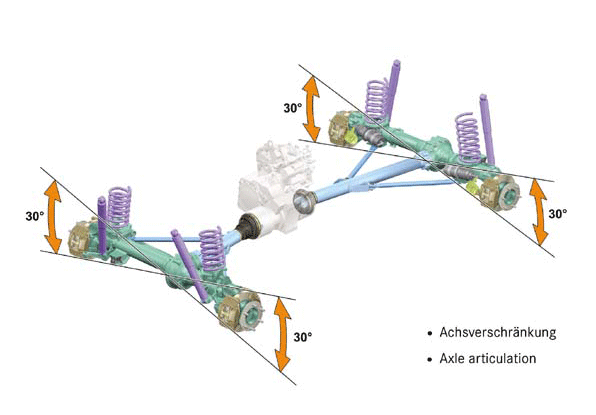
It would be best if you, as the owner of an expedition vehicle, could create a requirement profile for the frame and mounting. To do this, you need to know the maximum weight of the body and the exact area of operation. Both are rather difficult to determine in advance. However, the cabin builder should be able to tell you roughly how heavy the finished cabin will be, then you add all the full water tanks and all your many things that you will pack and enough reserve. The simpler way to calculate would be to take the manufacturer’s maximum weight and subtract the chassis, the rest of the weight must be supported by your frame, even if you hit the ground.
For mounting you would have to specify a maximum axle twist, but how should you know how big it would need to be. The axle twist is a measure of the ability of the chassis to turn both axles against each other on uneven terrain. The axle twist is specified in millimeters and results from the maximum difference in the axle twist before a wheel loses contact with the ground. Having this question in mind, you can think about where you want to go with your off-road vehicle. If you want to drive through areas that are developed similar to Europe, it is probably enough for you if you can drive your mobile over a high curb. However, if you want to drive through difficult terrain, you should definitely indicate more than a 500-millimeter twist.
Type of intermediate frame
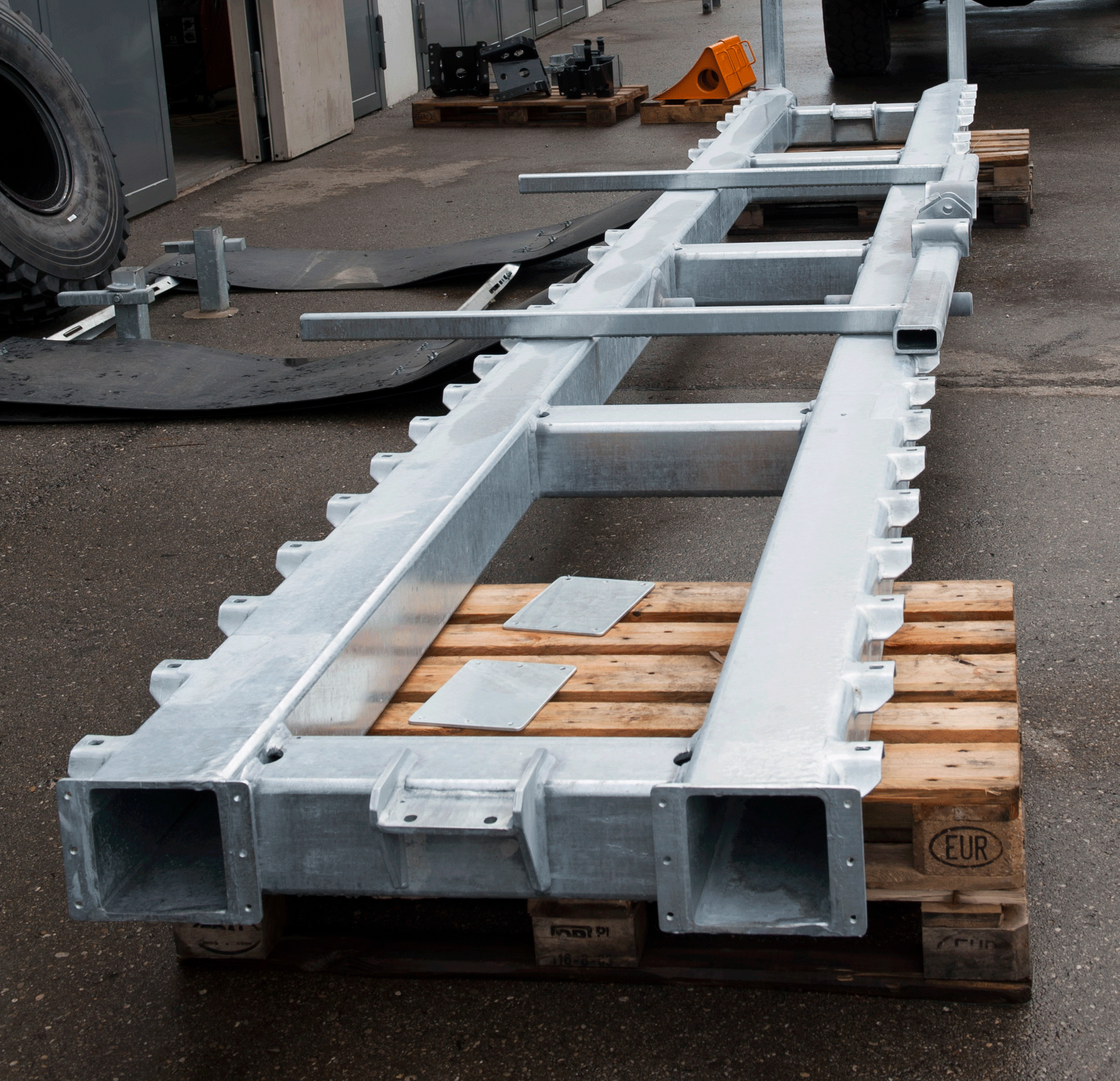
When building the intermediate frame and mounting, at least the manufacturer’s installation guidelines must be followed. It should be noted, however, that these guidelines are intended for boxes for the transport of goods. These compositions can twist a few centimeters, that doesn’t do any great harm. A living box though is not allowed to do that. Both the mounting and the frame must therefore be built a little stronger than the guidelines may provide. The frame must be completely torsion-free. A stable frame with a corresponding mounting is heavy and builds high. However, both are characteristics that you do not love, because you want to build a vehicle that is as light and as low as possible. In the field, these are advantages that can sometimes be very decisive. We recommend that you save the weight and height elsewhere, not on the mounting and the intermediate frame. A metal frame is also built into the base plate of the living box, which is used to absorb the forces involved in connecting the box to the intermediate frame. This frame cannot be added to the intermediate frame so that the necessary forces can be absorbed together!
On our travels we unfortunately met many travelers with cabins created by well-known builders whose intermediate frame was broken (other bloggers have already reported on this, we can only confirm that). In such a case, the cabinet doors can no longer be closed properly, entrance doors also no longer close, and cracks appear through which water enters the walls, the ceiling and even the living room.
Mounting of the intermediate frame
In the classic case, we differentiate between four different types of mounting: rubber and spring bearings, three-point mounting system and diamond mounting. We know just one single vehicle in which the living box is mounted on air suspension. However, this is a special one-off production and obviously worked well.
Rubber bearings
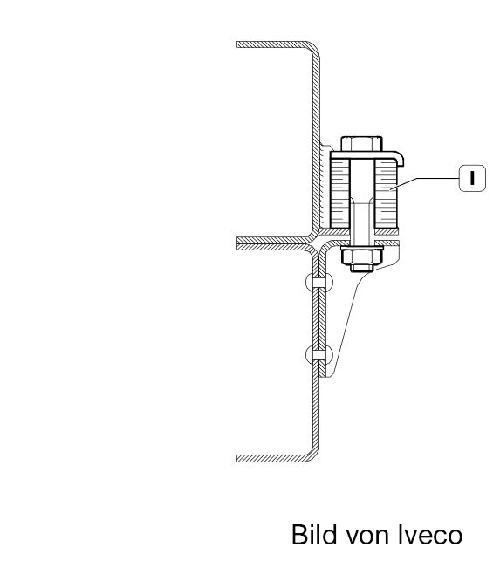
The rubber bearings are used in vehicles with torsion-resistant chassis frames. Chassis, such as the Iveco Daily for example. In this case, the entanglement is managed via the wheel or axle suspension. According to Iveco guidelines, the rubber mount is used when the vehicle is on uneven and bad roads, which is basically the case with an expedition vehicle. The rubber bearings on the cab are softer and harder at the end of the chassis. Or the intermediate frame is even firmly connected to the chassis at the end of the chassis.
Spring bearings
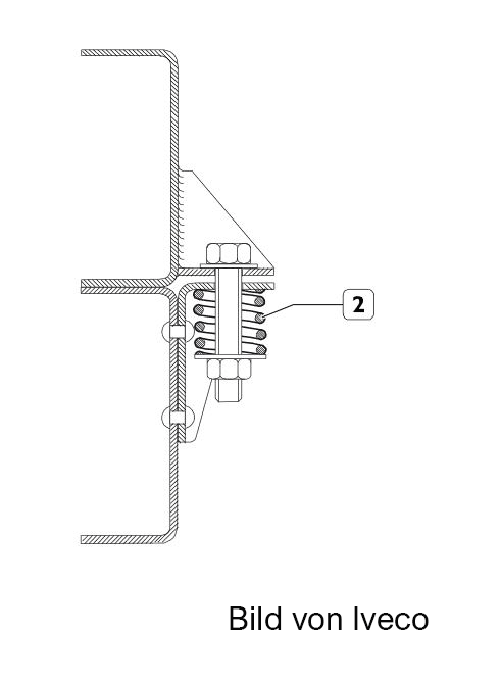
The spring bearings are the easiest way to detach the intermediate frame from the chassis. A large entanglement is only theoretically possible with this mounting. The greater the twisting distance, the more the living box becomes very lively, especially when driving faster.
Three-point mounting system
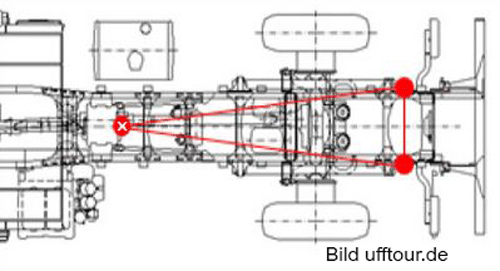
The connection between the intermediate frame and the chassis is limited to three points. The construction looks simply, but it’s not that simple at all. The entire weight and the dynamic forces must be transmitted and, above all, distributed at three points. Two fixed bearings are mounted at the rear of the chassis and a pivot bearing in the middle at the front. This type of mounting ideally detaches the intermediate frame from the chassis and is very suitable for large entanglements.
Diamond mounting
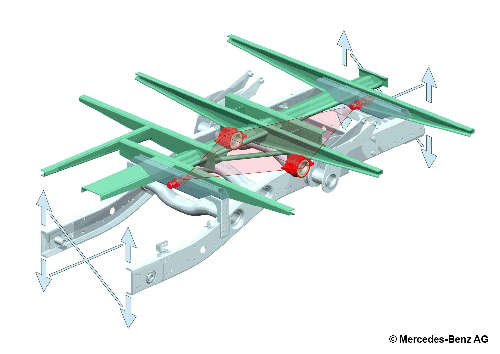
The diamond mounting, also called trapezoidal or four-point mounting, is a double three-point mounting. Today it can be found in many expedition vehicles. The fixed bearing is mounted in the middle of the intermediate frame above the rear axle, one pivot bearing at the front near the driver’s cab and the other at the rear end of the chassis. Due to the diamond mounting, the overall height can be somewhat minimized compared to the three-point mounting with the same twist. The mobility of the two frames in relation to one another is roughly the same as with the three-point mounting.
Our recommendation
Make sure you invest enough time to clarify all the issues with regard to the intermediate frame and the mounting. It is important that you clarify with yourself what for you would like to use your new vehicle in the future. All your beautiful things in the living box are of no use to you with an unsuitable intermediate frame. It is the foundation of your future home.
Have the storage and the intermediate frame built by a specialist, not the living box builder. We recommend this based on our travel experiences. You don’t have the plumber calculate the statics of your house for you either. Your budget shouldn’t have an impact on your intermediate frame and mounting. There are many points where you can save money, but don’t do it on your foundation. It is better to dimension the intermediate frame and the entanglement a little too generously so that you can still close your doors tightly in a few years’ time.


Heavy Metal, nice!
I read a lot about the different subframes or the intermediate-frame as you call it.
It gives a good overview to see this one below the other.
Thanks for explaining
In January 2021 wanna start building our expeditietruck
Best regards
“Fai costruire il vano portaoggetti e il telaio intermedio da uno specialista” quale azienda consigli, grazie
“Lassen Sie das Handschuhfach und den Mittelrahmen von einem Spezialisten bauen” Welche Firma empfehlen Sie, danke
Tuvimos nuestro cuadro intermedio construido por Toni Maurer https://www.toni-maurer.de/en/startseite-neu-en/ y podemos recomendarla mucho.
Great article for explaining the alternatives. Your expedition truck is a 6 wheeler. I’m thinking of a 4 wheeler with a 4.3/4.5 long box (to stay within 7.5t) and maybe the spring bearing approach with a rubber between the channels to absorb any slapping noise that may occur during driving.
thanx Pat
you’re right, as shorter the box as less movement you’ll have, so with 4.5m box it will work with rubber.